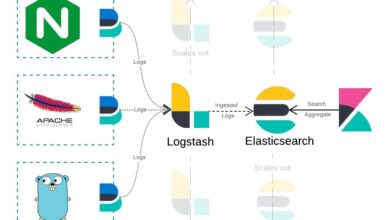Learning Well With LTPulse: A Comprehensive Guide To Self-Improvement

We all want to learn and improve, but sometimes it can be overwhelming to find the resources we need. With so many different methods of learning out there, it’s hard to choose which one will be the most effective for us. That’s why we’re introducing LTPulse: a comprehensive guide to self-improvement that provides users with the educational tools they need to reach their goals. In this blog post, we’ll explain what LTPulse is and why it’s the perfect platform for anyone looking to make meaningful improvements in their life. Read on to learn more about how you can use LTPulse to become a better version of yourself.
The Benefits of Learning
There are numerous benefits to learning, both in the short and long term. In the short term, learning can help you better understand and complete tasks at work or school. It can also help you expand your knowledge and skillset, making you more well-rounded and capable. In the long term, learning helps you keep your mind sharp as you age. It can also lead to new opportunities and experiences that you wouldn’t have otherwise had.
Overall, learning is essential for personal growth and development. Whether you’re looking to improve your job prospects, earn a higher salary, or simply keep your mind active and engaged, learning is a key part of achieving success. With LTPulse, you can learn at your own pace, on your own time, and from anywhere in the world. So what are you waiting for? Start learning today!
The Different Types of Learning
There are three primary types of learning: visual, auditory, and kinesthetic. Each type of learner has unique strengths and preferences that can be leveraged to support optimal learning.
Visual learners are often able to grasp concepts quickly when they are able to see them demonstrated. Auditory learners often benefit from hearing information repeated or explained in different ways. Kinesthetic learners often prefer to learn by doing, and may benefit from hands-on activities or experiential learning.
Differentiating instruction to support all types of learners is an important part of ensuring that all students have access to an effective education. By understanding the different types of learning, educators can better tailor their instruction to meet the needs of all students in their classrooms.
The importance of setting goals
Setting goals is one of the most important aspects of self-improvement. Without goals, it can be difficult to measure progress and identify areas in which improvement is needed. Furthermore, goals can provide motivation and a sense of purpose.
Some people might be naturally inclined to set goals, while others may need to consciously make an effort to do so. However, it is worth taking the time to learn how to set effective goals, as this skill can be extremely beneficial.
There are many different ways to set goals, but some key elements include specifying what you want to achieve, setting a timeframe for achievemenet, and making sure your goal is achievable. Additionally, it can be helpful to break down big goals into smaller steps that can be completed over time.
Self-improvement is a journey that requires effort and dedication. However, by setting clear goals, you can make the process easier and more enjoyable. With well-defined goals, you will know exactly what you need to do to improve and will be more likely to see tangible results from your efforts.
How to get started with learning
Learning can be a daunting task, but with the right tools and resources, it can be an incredibly rewarding experience. Here are a few tips to get started with learning:
1. Set realistic goals. It’s important to have a clear idea of what you want to achieve through learning. Whether you’re looking to improve your employability, gain new knowledge or simply keep your brain active, setting achievable goals will help you stay motivated and on track.
2. Find a learning method that suits you. There is no one-size-fits-all approach to learning. Some people prefer visual methods such as watching videos or reading textbooks, while others prefer more hands-on methods such as attending workshops or taking online courses. Experiment until you find a learning method that works best for you.
3. Create a study schedule. When it comes to learning, consistency is key. Dedicate some time each day or week to studying, and stick to your schedule as much as possible. If you’re struggling to find time in your busy schedule, try waking up 30 minutes earlier or using your lunch break to study.
4. Get organized. A well-organized study space can make all the difference when it comes to learning effectively. Make sure you have all the materials you need (ebooks, textbooks, etc.) within easy reach, and create a filing system for notes and other important documents.
5. Seek out resources and community support.
The different stages of learning
The three stages of learning are: the acquisition stage, the consolidation stage, and the retrieval stage.
During the acquisition stage, new information is acquired and stored in long-term memory. This process occurs through encoding, which is the process of converting information into a format that can be stored in long-term memory.
During the consolidation stage, newly learned information is consolidated into long-term memory. This process occurs through rehearsal, which is the process of repeatedly accessing and retrieving information from long-term memory.
During the retrieval stage, information that has been stored in long-term memory is retrieved and used. This process occurs through retrieval cues, which are external or internal cues that help us access information from long-term memory.
How to make learning a habit
The key to making learning a habit is understanding how to learn best and using that knowledge to create a sustainable system. The first step is finding out what kind of learner you are. Do you learn best by listening to audio recordings, reading texts, or watching videos? Once you know your preferred learning method, you can seek out resources that fit your needs and begin building your custom learning plan.
As with any habit, it’s important to start small and gradually increase the difficulty level as you get better at following through. Set realistic goals for yourself and break down the steps needed to reach them. For example, if your goal is to improve your French skills, start by setting aside 10 minutes each day to listen to a French conversation podcast or practice writing in French. As you get more comfortable, you can add more time or challenge yourself with more difficult tasks.
Most importantly, don’t be too hard on yourself if you miss a day or two—just get back on track and keep going. Learning should be enjoyable, so make sure to fit it into your schedule in a way that works for you. With a little effort and planning, soon enough learning will become second nature!
Conclusion
All in all, this comprehensive guide to self-improvement with LTPulse has shown you the what and how of learning well. We hope that by using these tips and tricks, you will be able to make the most out of your time spent learning. Whether it’s studying for a test or simply developing new skills, there are plenty of ways to use LTPulse as an effective tool for personal growth. So get started on your journey today!



